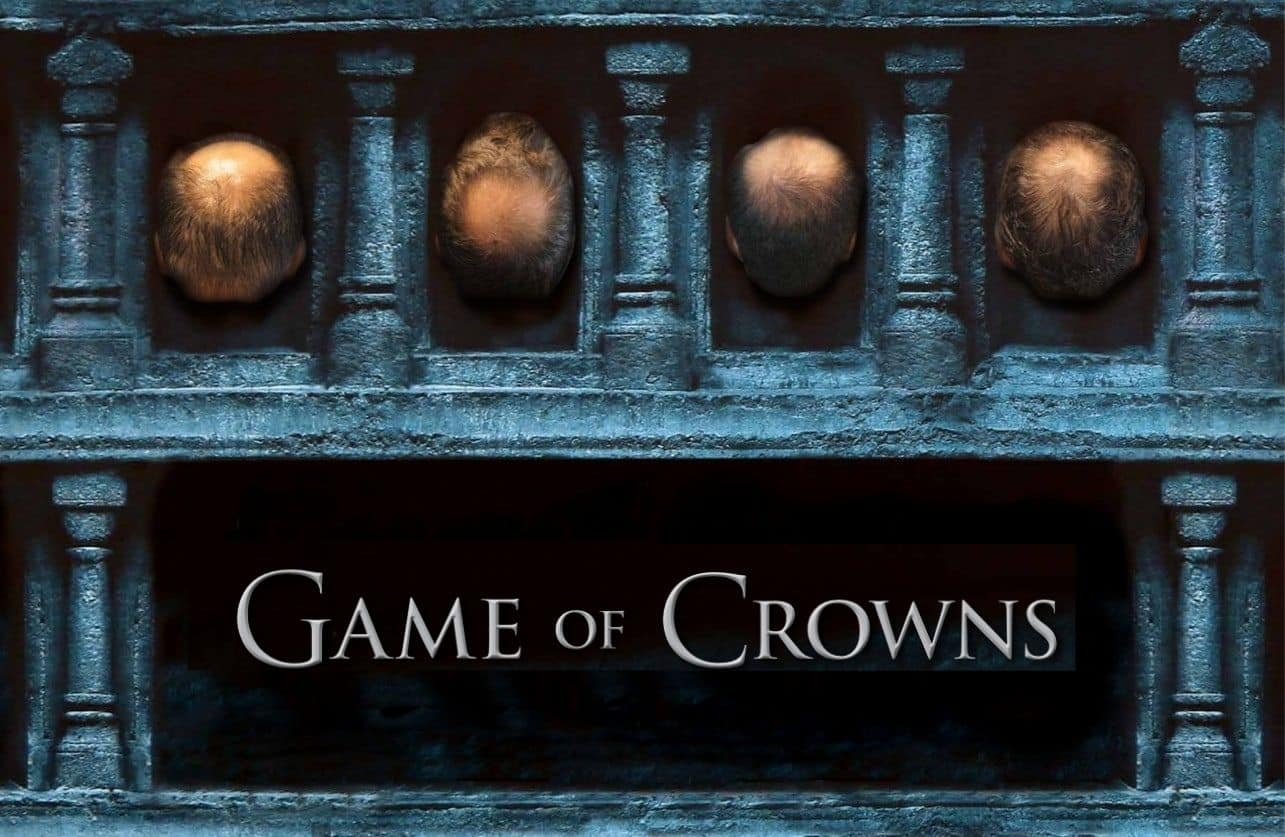A risky procedure in a “challenging” yet cosmetically less critical area—the crown.
The fact that thinning at the crown is considered less cosmetically important is easy to understand, simply because it’s not very visible… neither in the mirror nor, for example, when someone else looks at you, unlike the hairline, which is the first thing people notice! Nonetheless, many patients tend to focus more on the crown than on the frontal area.
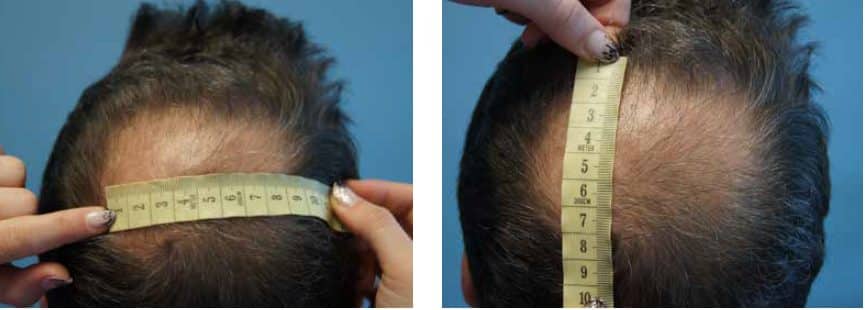
What are the “key” challenges?
The main challenge is that natural hair growth at the crown follows 1-2 whorls, usually rotating clockwise, with hairs growing at oblique angles. In patients who still have some hair at the crown, the direction of the whorl is clearly visible and must be carefully followed. In individuals with complete hair loss, the surgeon must design the whorl pattern from scratch during the hair transplant.
The whorl pattern at the crown results in less overlap between hairs, meaning that achieving a dense appearance in this area requires a significantly higher number of grafts
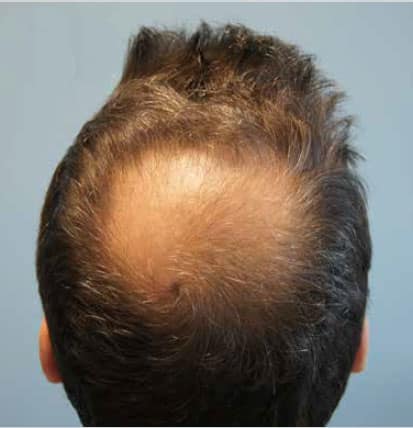
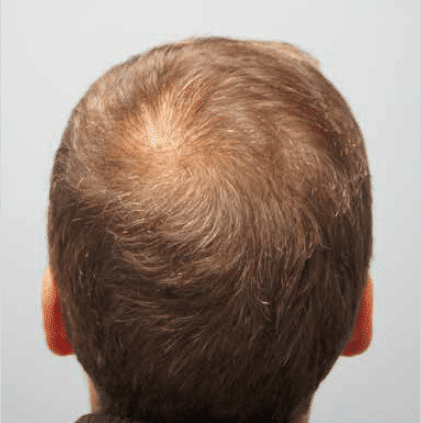
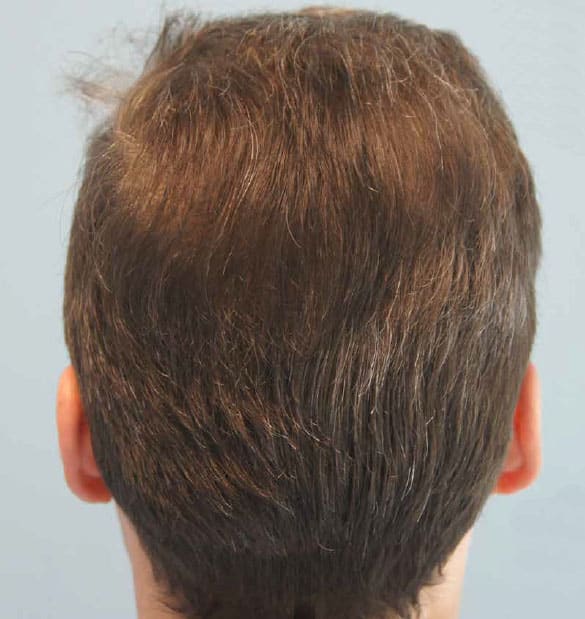
As shown in the photos, covering a relatively small crown area of 63 cm² required 2,350 hair follicles.

Thinning at the Crown Without Thinning in Other Areas
The rarest type of thinning at the crown occurs when the thinning is noticeable only in this area, while the rest of the scalp—front and sides—remains almost unaffected. In such cases, a fairly large number of hair follicles are needed so that the density achieved at the crown perfectly blends with the density of the surrounding hair. Full blending is achieved when the hair length at the crown exceeds 3-4 centimeters (see fig. 5), resulting in a 100% natural appearance.
However, isolated thinning only at the crown is extremely rare. Typically, thinning occurs simultaneously at the hairline and temples along with thinning at the crown—specifically in the area just in front of the crown. In this pattern, the doctor must act strategically and intelligently. Since the patient’s hair follicles are limited, a smart treatment plan will allocate the available follicles wisely to fill the temples, part of the frontal area, and the crown.
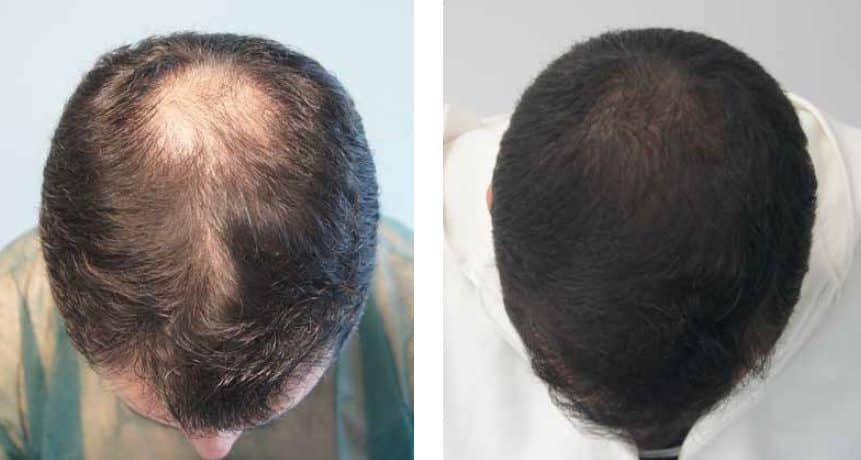
Restoring the area just in front of the crown creates a “background” for the hairline. As this hair grows longer, it will naturally fall over the transplanted hair at the crown, enhancing the desired blending effect in that area. The final result is a natural-looking hair transplant that effectively reverses the patient’s overall thinning—not just at the crown

One peculiarity of thinning at the crown—or how it “thins out”—is that it follows a centrifugal direction rather than an anterior-posterior one, as seen in other areas of the scalp. Therefore, if someone rushes to fill in a initially small crown area, the almost inevitable peripheral progression of hair loss will result in an isolated “island” of hair surrounded by bald areas.
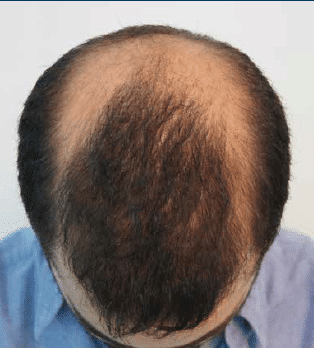
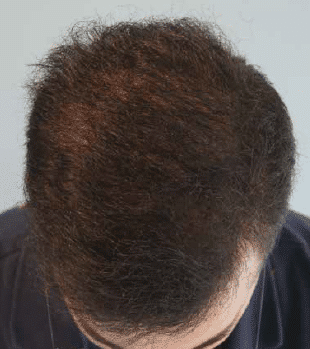
As evident from the case photos (images 10 and 13-14), restoration is required not only for the crown but also for the surrounding areas to achieve a natural hair transplant result.
Hair transplantation in the crown area demands from the surgeon great skill, experience, dexterity, and an aesthetic sensibility to deliver a natural-looking outcome. In most cases, reinforcing areas beyond the crown is necessary to provide the patient with a cosmetically balanced and natural result. Therefore, the right strategy in the distribution and placement of grafts is what will ultimately reward both the patient and the surgeon with a remarkable outcome.



